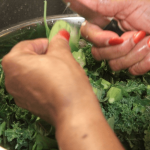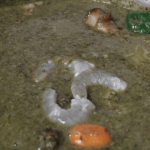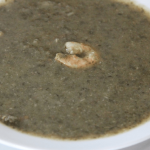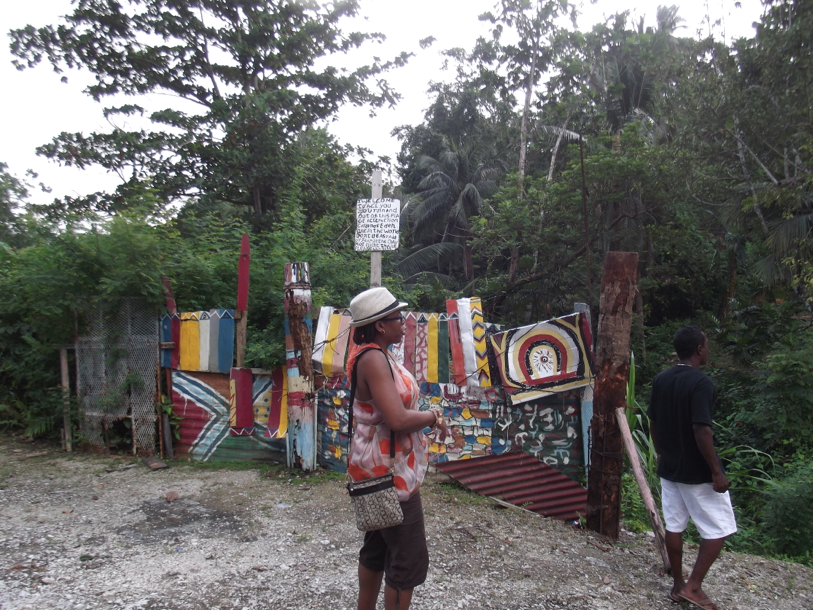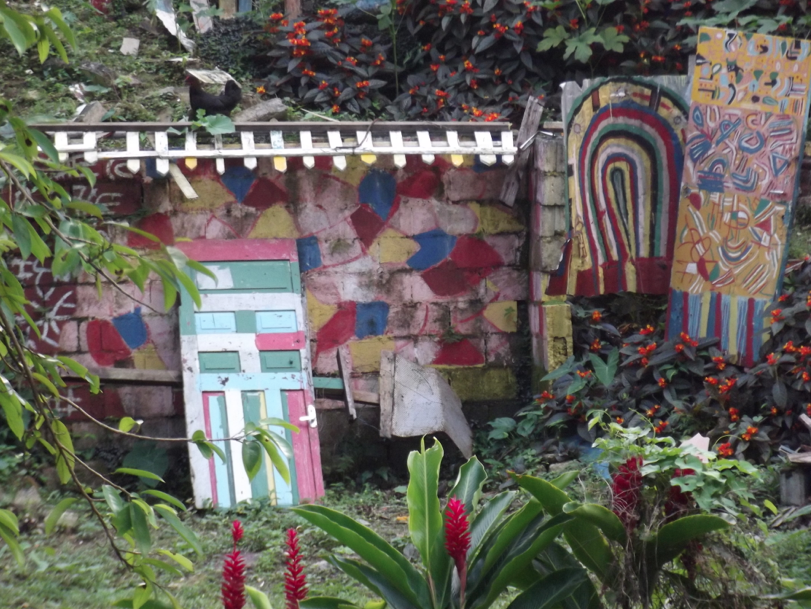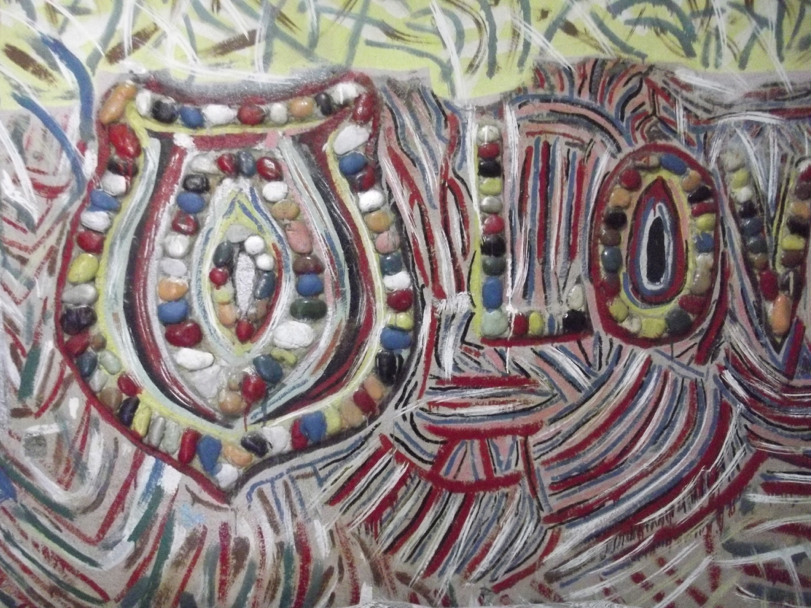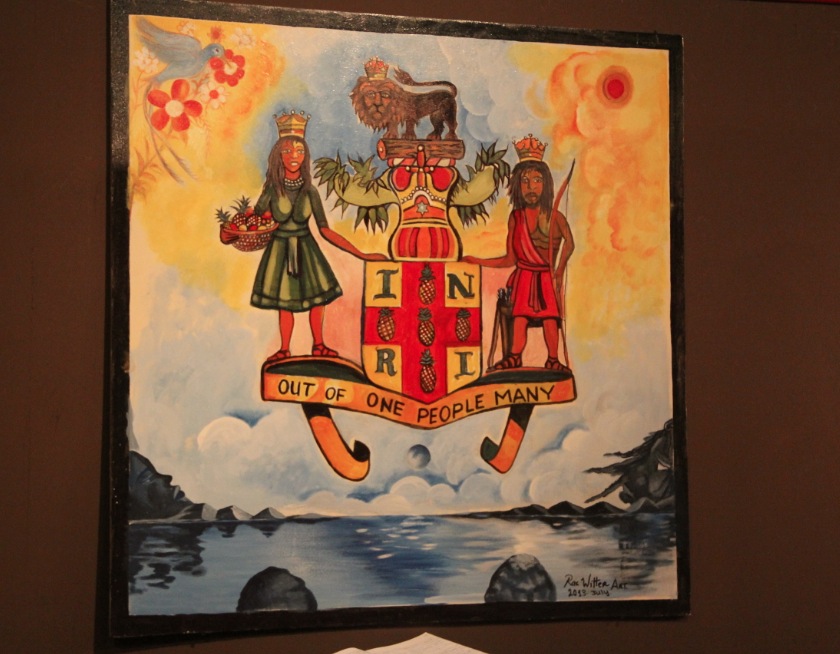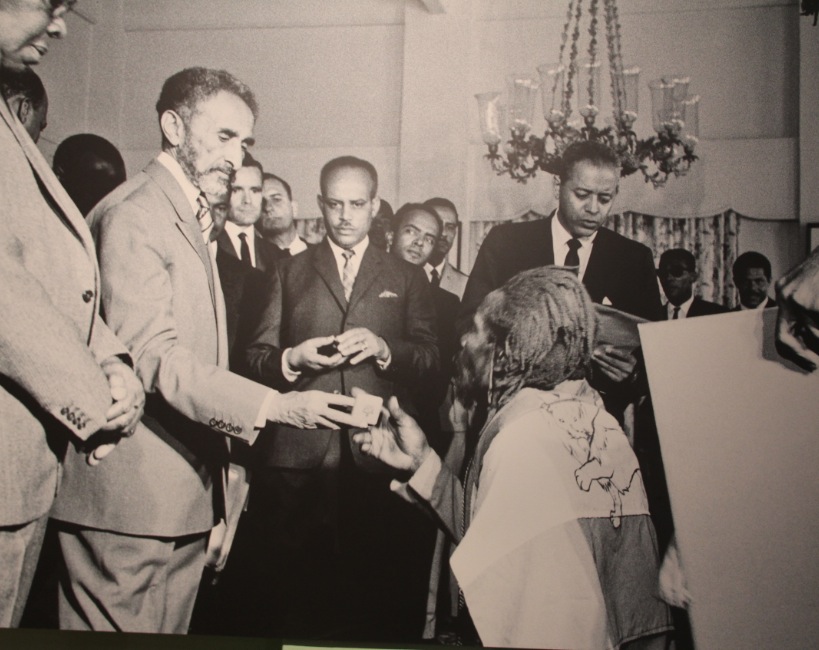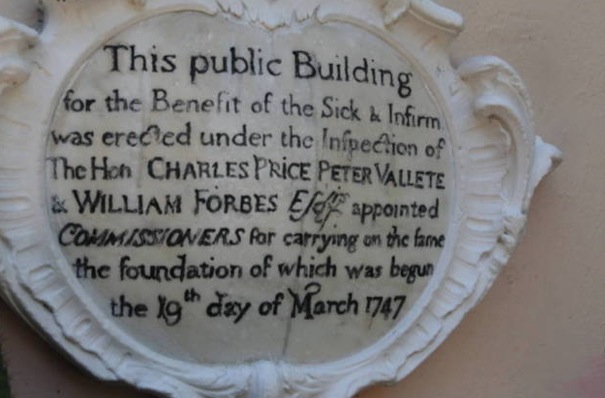Traditions, such as how to prepare certain meals are generally passed from mother to daughter, the older women in the family to the younger ones. Though a very talented cook and baker, my mother never taught me how to cook.
By the time I was old enough to start learning, she’d passed the responsibility for preparing meals on to our helper, going into the kitchen only at Christmas to bake or when we expected company. Then she’d create elaborate meals, which were, of course, well beyond our helper’s capabilities.
Somehow, though, cooking came to me naturally — I can fix just about any meal. But when I decided to feature pepperpot soup for FoodieTuesday, I realized that I didn’t know how to make it.
Sure, I could have used a recipe from one of my cookbooks but that just wouldn’t do, not for pepperpot soup. Knowing how to make it made me think of those family traditions. So I emailed my sister and aunt. I wanted a recipe I knew someone in the family had used.

- 1/2 lb. smoked or corned pork, pig's tail or salt beef, chopped in small pieces
- 1/2 lb. fresh beef (boneless, cubes)
- 3 cloves chopped garlic
- 1 onion (chopped)
- 6 cups water
- ½ lb. yellow (or other yam), 1 lb. cocoa or (2 medium green plantains peeled and chopped)
- 1/2 lb. cream of coconut (or 1 can coconut milk)
- 2 cups okra
- 1 hot pepper (Scotch bonnet pepper, chopped)
- 1/2 red pepper (sweet, chopped)
- 1 lb. callaloo/spinach, chopped
- ½ lb. cabbage chopped
- ½ lb. kale or mustard greens chopped
- 1lb flour (1/2 plain and ½ whole wheat) for dumplings
- Salt and black pepper, to taste
- 2 bay leaves
- 11/2 tsp. thyme (ground)
- 4 stalks escallions (chopped)
- 4 pinches nutmeg
- In a large stockpot, add pork with a teaspoon of oil.
- Braise on medium heat to remove fat drippings.
- Pat the beef cubes dry.
- When enough drippings have been released, add the beef and sauté until brown.
- Add 6 cups of water, cover and let simmer for an hour. Skim off any foam that rises on the top and sides of the pot.
- Check meats for doneness then add all greens, including okra. Cook for ½ hour.
- Remove greens and puree in blender or food processor.
- Return pureed greens to pot. Add chopped onions, yam, coco, bay leaves, coconut, sweet pepper, beans and spices.
- Make spinners and add.
- Add scallions and other seasonings.
- Check taste and add a tablespoon of butter.
- Cook for another 15 minutes.
- Add shrimp during the last few minutes of cooking
- Spoon into a bowl, garnish with shrimp.
- Serve hot with rolls, slices of hard dough or other bread.
- Turkey or chicken can be substituted, or left out all together for a meatless soup.
- Meats can be pressure cooked.
Pepperpot soup is made primarily callaloo, a leafy green vegetable that’s a close cousin to spinach, as well as taro leaves, kale and okra – though any green, or combination of, will do.
This mix of vegetables, meat and pepper, lots of it, make pepperpot a delicious and nutritious meal. So nutritious that George Washington had his cook prepare it for his troops. According to a post on Chef Walter Staib’s, A Taste of History, Washington was introduced to a version of the soup when he visited his brother, Lawrence, in Barbados in 1751.
When my aunt emailed me a recipe appropriately called, Aunt Birdie’s Pepperpot Soup, I wrote back immediately. The recipe, she said, was similar to how she remembers the pepperpot soup that was made in her mother’s kitchen in rural Jamaica.
I knew right away that I wanted her to show me how to make it. I wanted to learn from someone who knew.
Auntie Birdie, my father’s youngest sister, is an accountant and fabulous cook who always shares stories about growing up “in the country,” as most Jamaicans call any place outside Kingston.
As she chopped the greens, Auntie Birdie, who was named after one of her mother’s sisters, reminisced. It certainly feels like life was simpler then, family life idyllic, the foods sweeter.
Most people cooked on a wood fire in a kitchen that was separate from the house, Auntie Birdie recalled. There was no refrigeration then so meats, primarily pork and beef, were cured, or smoked. The meat would be seasoned with pimento leaves and placed on a mesh, called a kreng kreng which hung over the fire. As meals were cooked with pimento woods, the smoke would slowly baste the meats and lock in the flavors. This smoked meat, along with a small amount of fresh beef, would be used in the pepperpot soup.

With my aunt and I working together, the pepperpot soup took two hours from preparation to table. The meat would have taken the longest to cook, but in this modern day kitchen, a pressure cooker reduced cooking time by more than half.
I had pepperpot soup last at the Pegasus Hotel in Kingston. It was the best pepperpot soup I’d had in a while. Auntie Birdie’s Pepperpot Soup made me go for seconds.
How to Join the FoodieTuesday Linkup
Join the FoodieTuesday linkup by –
- Posting a foodie photo on your blog
- Adding the link to your foodie post in the link tool at the bottom of this post
- Leaving a comment
- Tweeting this post using the hashtag #FoodieTuesday
Hope to see you at FoodieTuesday!
 Loading InLinkz ...
Loading InLinkz ...

